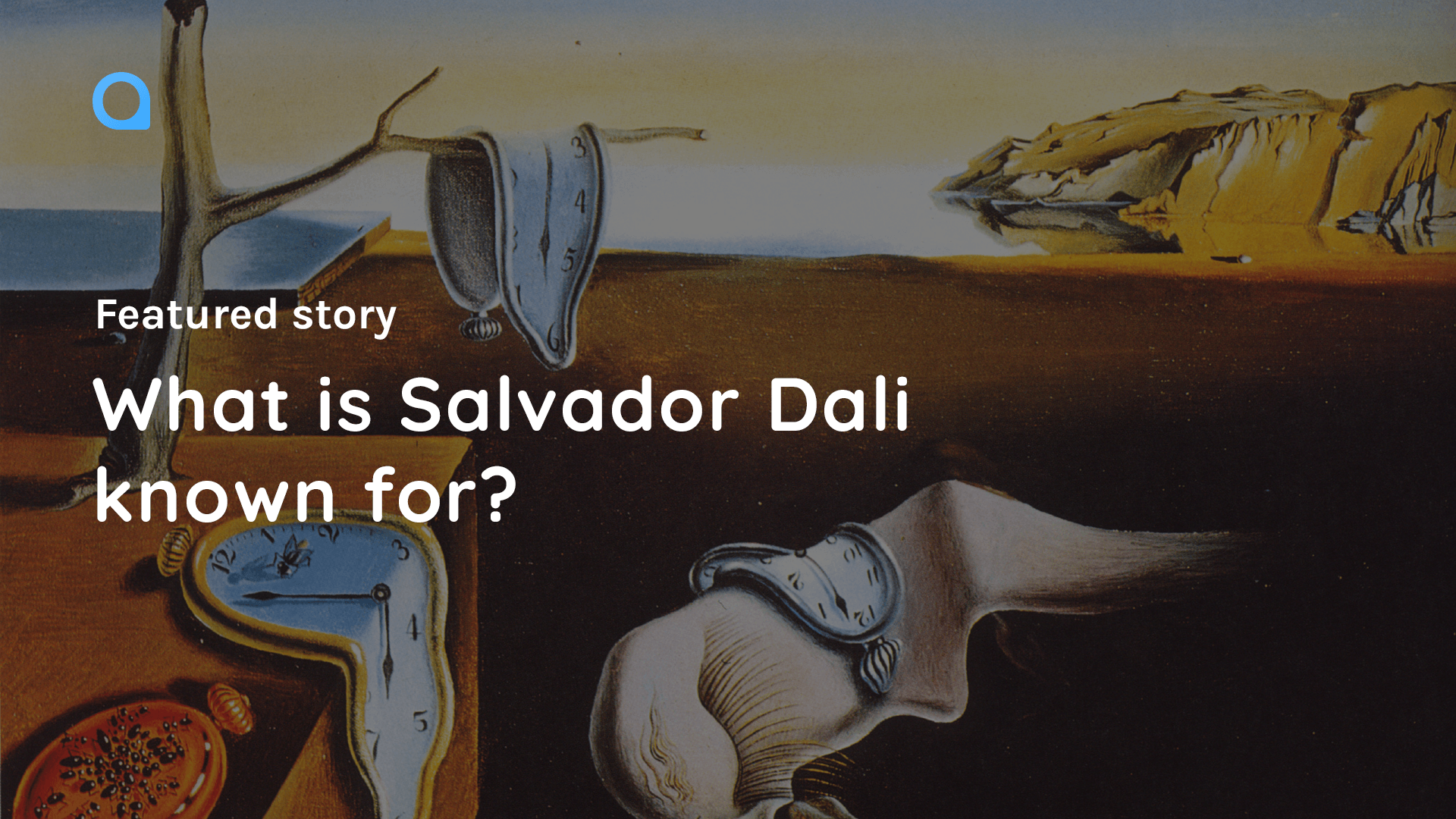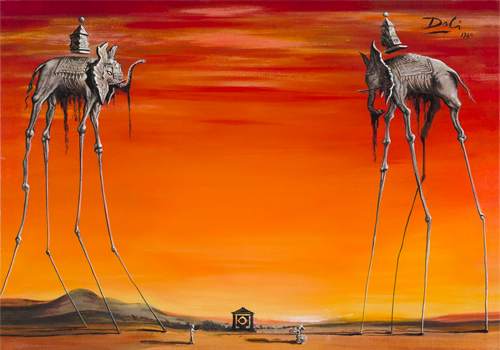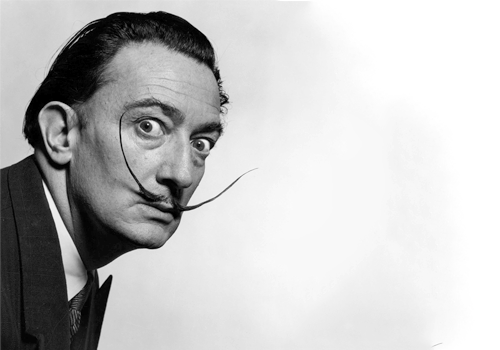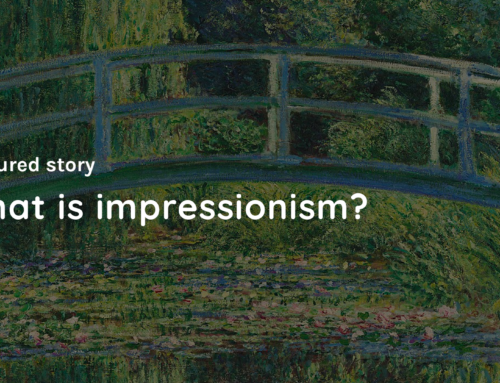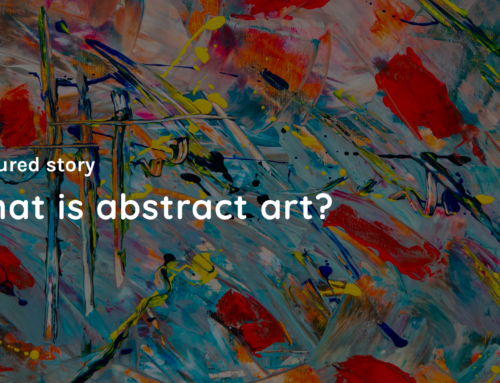Salvador Dali is considered one of the most famous and recognized artists of the 20th century. His painting style, which is often characterized by a blend of surrealism and realism, has captured the imagination of millions of people worldwide. In this blog post, we’ll take a closer look at what Salvador Dali is known for, and explore some of his most famous works.
Early Life and Career
Salvador Dali was born on May 11, 1904, in Figueres, Catalonia, Spain. He was the son of a wealthy lawyer and notary, and his mother was an avid supporter of the arts. From an early age, Dali was encouraged to pursue his creative interests.
Dali attended drawing school at the Colegio de Hermanos Maristas and later enrolled in the Academia de San Fernando in Madrid, where he studied under the famous painter Fernando Galí. While in school, Dali experimented with various styles, including Cubism and Futurism, but his work was not yet recognized as his own.
In 1926, Dali traveled to Paris and met with the Surrealist painter Joan Miró. This encounter had a profound impact on Dali and helped to solidify his artistic direction. He began experimenting with Surrealism, a style characterized by dreamlike images, irrational juxtapositions, and a rejection of traditional artistic conventions.
Some of Dali’s key early works include “Cabaret Scene” (1922), a Cubist-inspired painting featuring disjointed forms and bold colors, and “The Basket of Bread” (1926), which features a realistic depiction of bread and a landscape background, but with a strange, unexplained element of a hand emerging from the bread.
Dali’s early influences include the works of the Italian Renaissance painter Raphael, the French painter Jean-Auguste-Dominique Ingres, and the Spanish Baroque painter Diego Velázquez. These influences can be seen in Dali’s use of classical elements, such as perspective and the depiction of anatomically correct figures.
Surrealism and Dali’s Contributions
Dali’s involvement with the Surrealist movement
In 1929, Dali joined the Surrealist movement, a group of writers and artists who sought to unlock the power of the subconscious mind by creating art. The group was led by poet and theorist Andre Breton, who coined “surrealism” to describe their philosophy.
Dali’s unique approach to Surrealism soon set him apart from the other group members. While other Surrealists focused on creating dreamlike, abstract images, Dali combined realism and fantasy to create his distinct style. He believed that the power of Surrealism came from the juxtaposition of seemingly unrelated elements, such as ants crawling out of a timepiece.
Key themes in his Surrealist works
One of the key themes in Dali’s Surrealist works was exploring the subconscious mind. He believed that by tapping into his dreams and fantasies, he could reveal hidden truths about the human psyche.
Another recurring theme in Dali’s work was the concept of time. He was fascinated by the ways in which time could be distorted and manipulated, and many of his works depict melting clocks or other distorted timepieces.
Iconic works from this period, including “The Persistence of Memory” and “Metamorphosis of Narcissus”:
“The Persistence of Memory,” painted in 1931, is perhaps Dali’s most famous work. It depicts a barren landscape with several melting timepieces draped over various objects. The image has become a symbol of Surrealism and is often interpreted as a commentary on the fluid nature of time.
“Metamorphosis of Narcissus” is another iconic work from Dali’s Surrealist period. Painted in 1937, the work depicts the mythological figure of Narcissus, who falls in love with his reflection. In Dali’s version, Narcissus’s face is replaced with an egg, which is cracked open to reveal a flower. The image is often interpreted as a commentary on the nature of self-obsession and the power of transformation.
Other notable works from this period include “The Great Masturbator” (1929), “The Enigma of William Tell” (1933), and “Soft Construction with Boiled Beans” (1936).
Later works and legacy
Dali’s art underwent significant changes in the later years of his career. In the 1940s, he moved away from the Surrealist style that had made him famous and began experimenting with different styles, including classicism and mysticism. This shift in his art style was partly influenced by his growing interest in science and religion, particularly in the work of philosopher and scientist Teilhard de Chardin.
In the 1950s and 1960s, Dali produced a series of religious-themed works that fused religious iconography with his signature painting style. One of his most famous works from this period is “Crucifixion (Corpus Hypercubus)” (c. 1954), which portrays the crucified Christ in a hypercube, a four-dimensional cube. The painting is a powerful example of Dali’s fascination with science and religion and his ability to combine seemingly disparate themes.
Another notable work from Dali’s later career is “The Hallucinogenic Toreador” (1970), inspired by the bullfights he had seen as a child in Spain. The painting features a toreador in the center of the canvas, surrounded by images of melting clocks, elephants, and other surreal elements. The work is a testament to Dali’s continued interest in Surrealism and his ability to push the boundaries of his art.
Dali’s legacy extends far beyond the art world. His influence on contemporary artists and pop culture can be seen in films, music, and even fashion. His distinctive style and imagery have been imitated and parodied in countless works of art, and his influence on the Surrealist movement continues to be felt today.
In 1982, Dali created the 1st Marquess of Dalí de Púbol by King Juan Carlos of Spain, a title which he held until his death in 1989. His work continues to be celebrated in major museums and exhibitions worldwide, including the Dalí Theatre-Museum in Figueres, Catalonia, Spain, and the Salvador Dalí Museum in St. Petersburg, Florida, which houses over 1,500 works by the artist.
Dali’s Eccentric Personality and Legacy Beyond Art
Dali’s unique personality and eccentric behavior
Salvador Dali was known not only for his distinctive artwork but also for his eccentric personality. He was known for his flamboyant mustache, outlandish fashion sense, and theatrical public appearances. He often made outrageous statements and engaged in bizarre behavior, which garnered him both criticism and admiration. For example, he once arrived at a lecture in a Rolls Royce filled with cauliflower and famously kept a pet ocelot named Babou.
Legacy beyond his artwork, including his role in film and advertising
Dali’s influence on pop culture extended beyond the art world. He had a significant impact on film, collaborating with surrealist filmmaker Luis Bunuel on films such as “Un Chien Andalou” and “L’Age d’Or.” Dali also appeared in films such as “Spellbound” and “The Diary of a Genius.”
Dali’s unique style and personality made him a popular figure in advertising. He worked with companies such as Lanvin chocolates and Braniff International Airways, creating eye-catching and memorable ads that reflected his quirky personality.
Dali museums and exhibitions around the world
Today, Dali’s artwork is celebrated and studied around the world. Numerous museums and exhibitions are dedicated to his work, including the Dali Theatre-Museum in his hometown of Figueres, Spain, and the Salvador Dali Museum in St. Petersburg, Florida. These museums feature extensive collections of his artwork and offer visitors a chance to learn more about his life and legacy.
In addition, many contemporary artists have been inspired by Dali’s work and continue to draw from his artistic legacy. His impact on the art world and popular culture is undeniable, and his unique personality and style continue to captivate and inspire people worldwide.
Conclusion
Salvador Dali’s contributions to the Surrealist movement continue to inspire artists and art enthusiasts worldwide. His exploration of the unconscious mind and the nature of reality has had a profound influence on contemporary art and popular culture. Beyond his artistic achievements, Dali’s eccentric personality and unique fashion sense have made him a pop culture icon. Today, numerous museums and exhibitions worldwide celebrate his life and work, showcasing his masterpieces to all. As we continue to explore the mysteries of the human mind and the world around us, Salvador Dali’s art and ideas remain as relevant and inspiring as ever.

